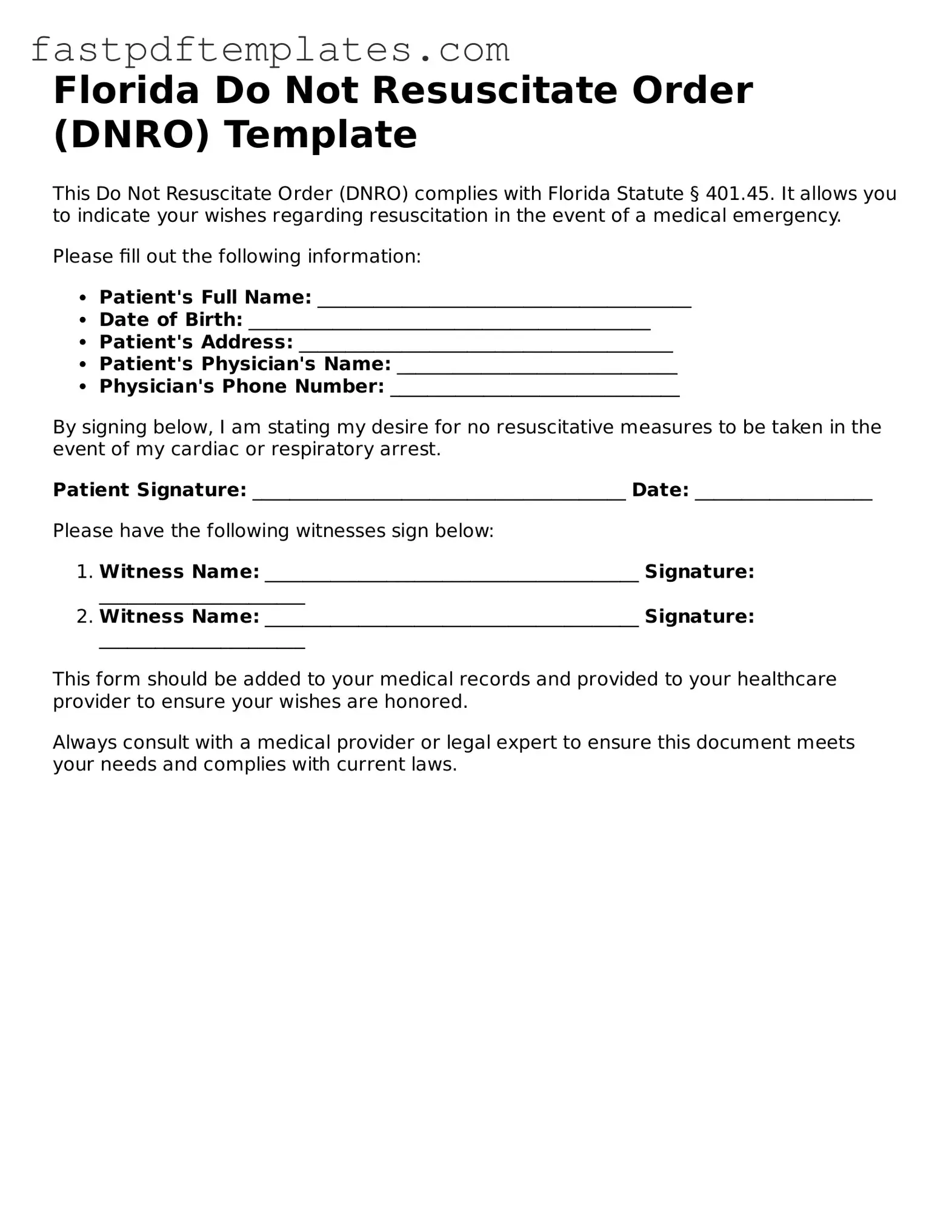The Florida Do Not Resuscitate Order (DNRO) form is similar to a Living Will. A Living Will is a legal document that outlines a person's wishes regarding medical treatment in situations where they are unable to communicate their preferences. Both documents serve to express a person's desires about end-of-life care, ensuring that medical providers respect their choices. While the DNRO specifically addresses resuscitation efforts, a Living Will can cover a broader range of medical interventions, including the use of feeding tubes and life support systems.
Another document comparable to the DNRO is a Healthcare Proxy. This document designates an individual to make medical decisions on behalf of someone else if they become incapacitated. Like the DNRO, a Healthcare Proxy allows individuals to assert control over their medical care. However, while the DNRO provides specific instructions regarding resuscitation, a Healthcare Proxy can make decisions based on the individual's overall wishes and best interests, which may evolve as circumstances change.
A Medical Power of Attorney (POA) is also similar to the DNRO. This document grants another person the authority to make healthcare decisions on behalf of the individual. Both the Medical POA and the DNRO aim to ensure that a person's healthcare preferences are honored. The key difference lies in the scope of authority; the Medical POA can address a wide range of medical decisions, while the DNRO focuses specifically on resuscitation efforts.
The Physician Orders for Life-Sustaining Treatment (POLST) form shares similarities with the DNRO as well. POLST is designed for individuals with serious illnesses and translates their treatment preferences into actionable medical orders. Both documents communicate a person's wishes regarding life-sustaining measures, but POLST offers a more comprehensive approach, addressing various aspects of care beyond just resuscitation.
Another related document is the Advance Directive. This legal document combines elements of a Living Will and a Healthcare Proxy, allowing individuals to outline their medical wishes and appoint someone to make decisions on their behalf. Similar to the DNRO, the Advance Directive aims to guide healthcare providers in accordance with the individual's preferences. However, it encompasses a wider range of medical scenarios, ensuring that all aspects of care are considered.
The Do Not Attempt Resuscitation (DNAR) order is another document akin to the DNRO. A DNAR order specifically instructs medical personnel not to perform cardiopulmonary resuscitation (CPR) in the event of cardiac arrest. Both documents serve to communicate a person's wishes regarding resuscitation, but the DNAR is often used in hospital settings, while the DNRO is a more general form applicable in various healthcare environments.
Another document that aligns with the DNRO is the End-of-Life Care Plan. This plan outlines an individual's preferences for care during their final days, including pain management and comfort measures. While the DNRO focuses on resuscitation, the End-of-Life Care Plan provides a broader perspective on the type of care desired at the end of life, ensuring that the person's overall wishes are respected.
Lastly, the Comfort Care Order can be compared to the DNRO. This document specifies that a patient should receive comfort measures rather than aggressive treatments. Like the DNRO, it reflects a person's wishes regarding the level of medical intervention they wish to receive. However, the Comfort Care Order emphasizes alleviating suffering and enhancing quality of life, rather than focusing solely on resuscitation efforts.
